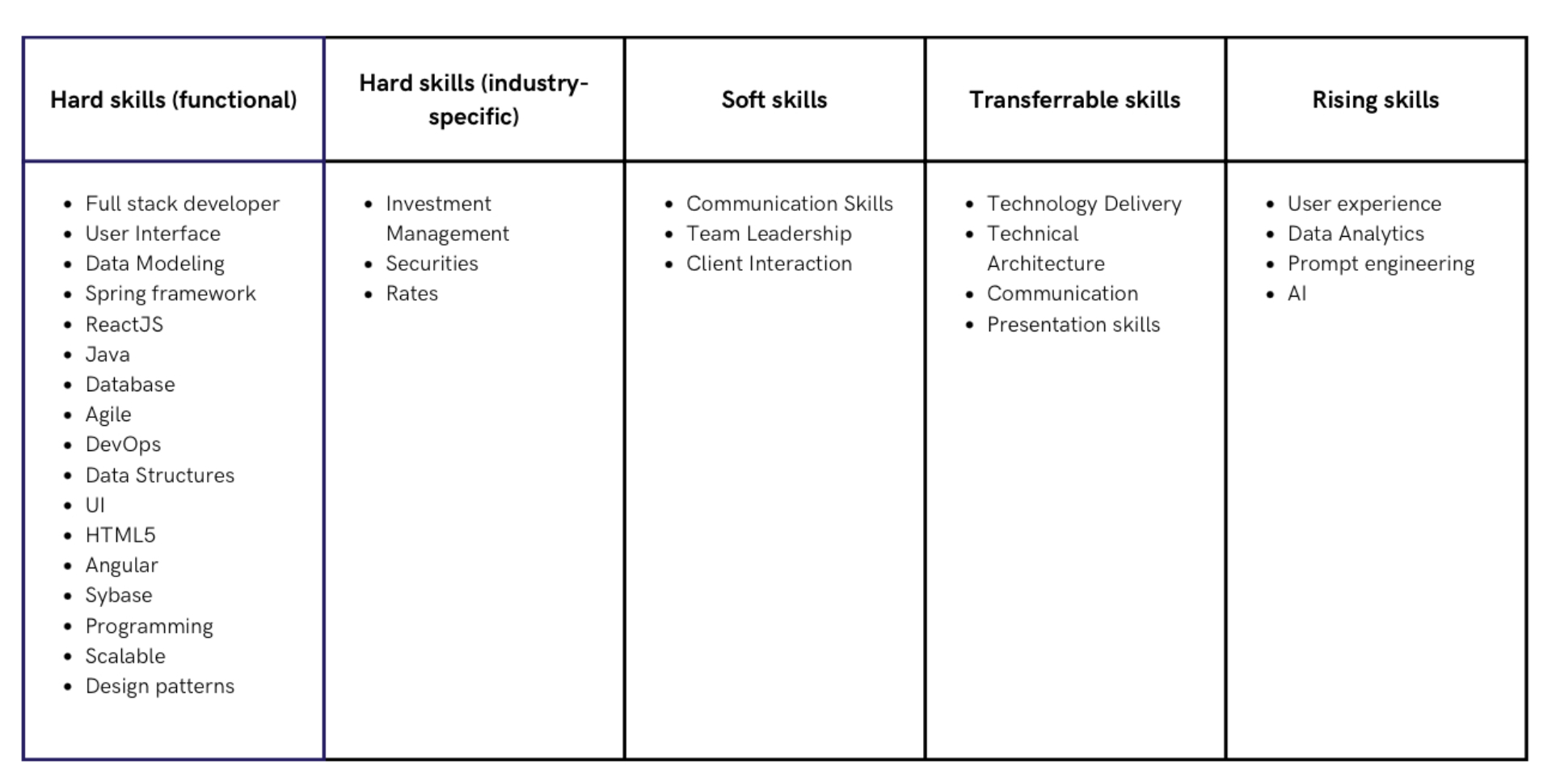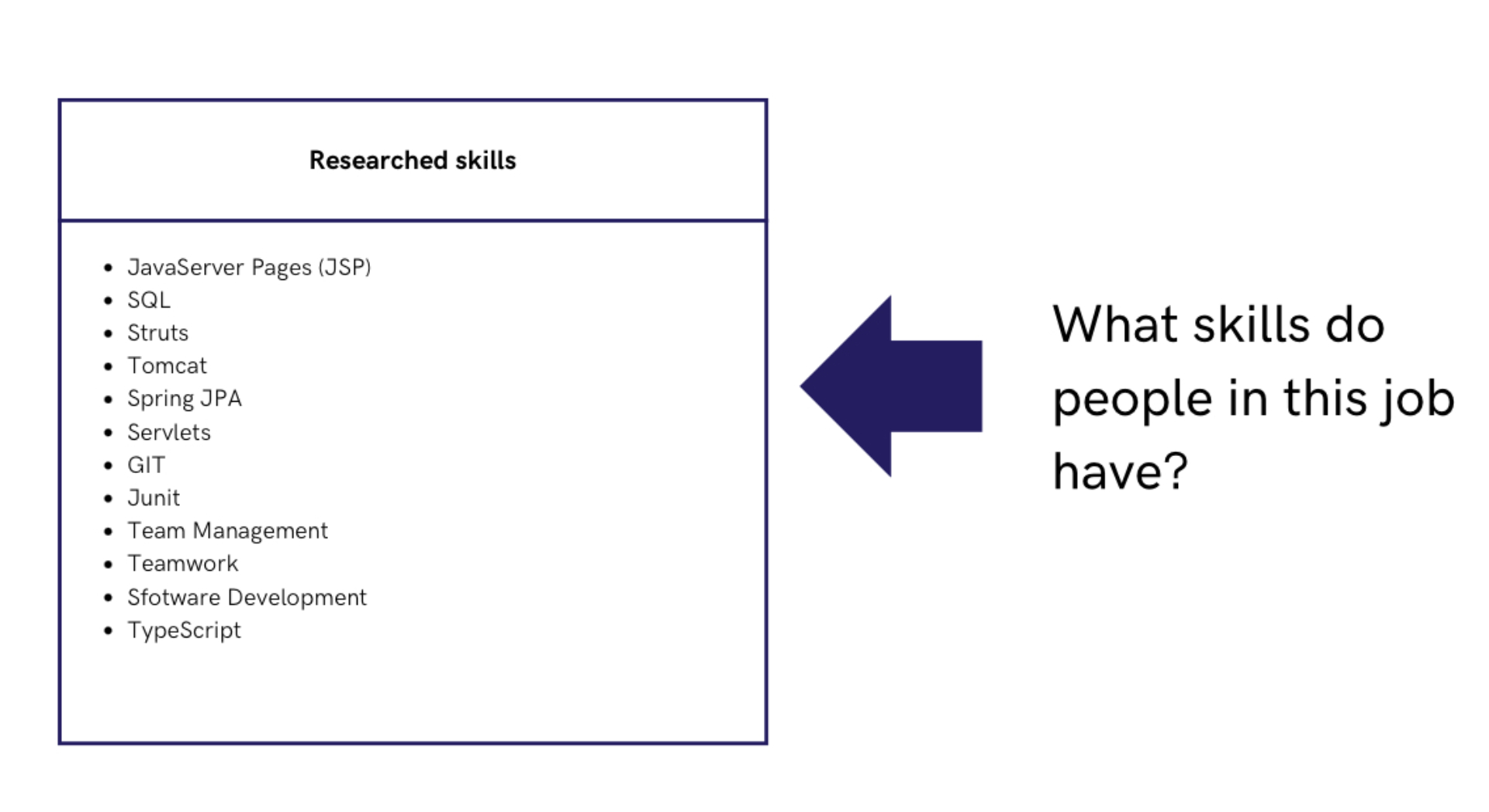How to apply to a job at a skills-based hiring company
Take an inventory of the skills in the job description.
First, take a look at the skills listed in the job description and separate them into the four categories of skills we covered in our last skills-based hiring blog, hard skills (these can be separated into functional and industry specific), soft skills, transferable skills, and rising skills. Let’s say you’re applying to be a Full Stack Developer at a large bank. The job description skill breakdown might look like this:

Use GenAI to help you identify and categorize skills.
Now you have your skills inventory. Tools like ChatGPT and Bard can help you with this skill breakdown as well. You can use prompts like:
“Can you extract the skills I need from this job description that I will paste below? Please categorize the skills into hard skills, soft skills, and transferable skills.”
“Can you put these into a table that I can use?”
“Which of the skills in this job description are specific to financial services?”
Next, do some research.
Once you’ve taken an inventory of the skills in your job description, do some research. Go on LinkedIn and find people who are currently in the job you want, and see what kinds of skills they have listed on their profiles, what certifications they have, and how they talk about what they do. In this case, find people who are Full Stack Developers at large banks. Ideally, see if you can find someone doing this job at the company you’re applying to. This may lead you to specific skills that weren’t listed in the job description but are used at that company. They’ll likely have some skills you didn’t think of like:

ChatGPT prompts to help research skills.
Another way to research skills used for this job in this industry is to look at job descriptions for similar companies. You can use ChatGPT to do this using prompts like:
“Look at recent job descriptions for VP Full Stack Developers at (Company A), (Company B), and (Company C), and find the skills needed for this job.”
Merge your skills.
Lastly, merge the skills from the job description and your research together on your resume. Once you've got this big list of skills, go through and keep the ones that you have experience in. Save the ones you don't as a list of skills to develop. Remember, only claim a skill if you have reasonable experience in it. It’s okay to not have all of the skills on a job description (if you do, you’re overqualified). When applying for a job at a skills-based hiring company, really lean into the skills section of your resume. Don’t worry about making your resume a certain number of pages, just focus on making sure your skills are front and center in your application.
ChatGPT can be a huge help for tedious processes like this, but it’s important to remember that it isn’t perfect. Don’t use GenAI to write cover letters or resumes in their entirety. GenAI is best used to provide outlines or help you enhance what you already have. Most GenAI tools have a lag in their training data. This is especially important to remember if you’re applying for jobs in an emerging or niche field. Lastly, you should always verify any information coming from a GenAI tool. If it doesn't sound right, it probably isn’t.
Privacy Policy Terms Of Use




